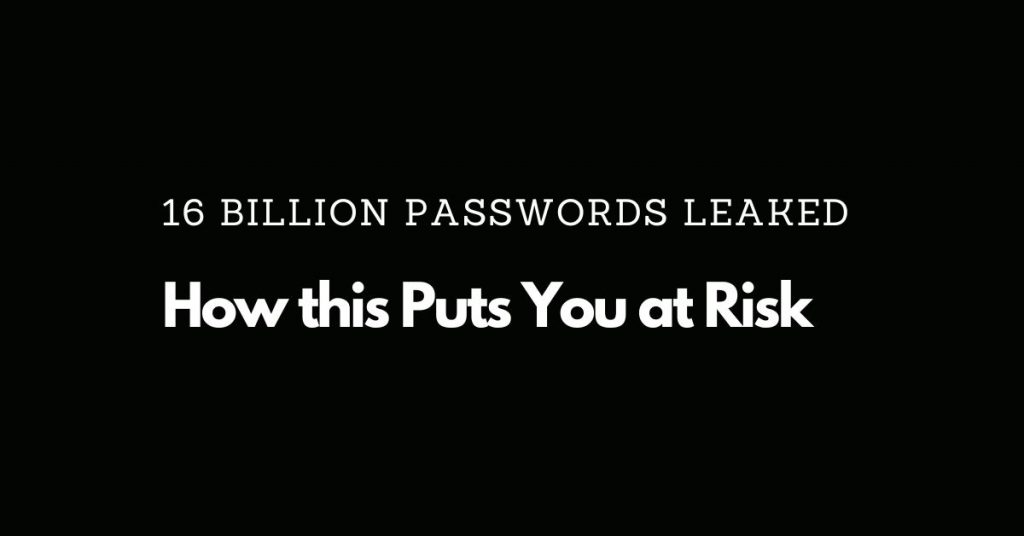A stunning breach has exposed billions of passwords, emails, and usernames from virtually every type of online account. This massive credential dump affects major services like Apple, Google, and Facebook, alongside many others. It’s likely your information is part of this leak, which affects both personal and professional accounts, raising the stakes for online security. The data includes details from social media, shopping, banking, and government sites. With passwords being in plain text for many accounts, the risks escalate significantly. Here is a detailed account of what transpired and the steps you should take.
What Happened
In June 2025, a breach was unveiled by researchers, revealing a major leak containing 16 billion unique login credentials. These included usernames, emails, and passwords for major global services, such as Apple, Google, Facebook, Netflix, LinkedIn, Dropbox, PayPal, and more. Amongst those affected were government officials, further highlighting the severity of the situation.
The data was pooled from over 30 compromised databases since the start of 2025, largely extracted using malicious software that silently harvested login details from users’ devices. The leaked data spans across social media, email, banking, streaming, cloud storage, and developer platforms. Alarmingly, many passwords were stored in plain text, making them an easy target for exploitation.
Cybersecurity teams confirmed overlaps with past breaches, such as a reported 184 million record breach in May 2025, but noted that a significant portion came from new sources. This specter of easily accessible credentials has amplified concerns about credential-based attacks, facilitating mass login attempts, identity theft, and phishing. This marks the largest credential leak reported publicly, elevating the global conversation around account security.
Why It Matters
This breach is a stark warning for every internet user. With billions of user credentials freely accessible to criminals, the path to targeted attacks has become alarmingly direct. If you reuse passwords across sites, an initial breach could lead to cascading effects like compromised bank accounts and hijacked emails. Even two-factor authentication is vulnerable if hackers access your email accounts, allowing them to reset passwords or intercept security codes.
Large-scale credential dumps transform ordinary accounts into potential targets. Hackers use automated tools to test your leaked passwords across numerous sites. A single reused password could compromise multiple accounts, escalating your risk dramatically. The repercussions extend beyond just financial loss. Imagine yourself being impersonated on social media or cloud storage. If you’re responsible for work accounts or smart home devices, the stakes are even higher, risking private data or physical security.
Equally concerning are the privacy implications. Even avoiding mainstream platforms doesn’t guarantee safety; information may still be procured from shopping sites, forums, or government portals. Combined with other leaked data, cybercriminals can craft detailed profiles to execute sophisticated phishing attacks or identity theft. This event emphasizes that credit monitoring is a reactive measure, and proactive account security is essential. Given the sheer scale of this leak, reliance on weak security practices puts even tech-savvy users in uncharted and perilous territory.
The openness of this leak necessitates a profound shift in our perception of online trust. Complacency is risky. Every account is a potential gateway. The urgency is to act as though exposure is inevitable and prioritize resilience with strong, unique passwords, fortified authentication, and vigilant monitoring. This breach illustrates that neglecting regular account maintenance is unacceptable for anyone interested in privacy and security, even outside the tech realm.
What You Can Do
Such a massive breach changes the rules of online security. To stay secure, focus on your most crucial accounts such as email, financial logins, and any services where a reset link could disclose more. Here’s a guide to minimize your risk:
Change passwords for primary accounts immediately
Update passwords for key accounts, including your email, banking, shopping, and cloud services. Email protection should come first as it’s often a gateway to other accounts. Avoid password recycling; each should be unique and complex.
Adopt a password manager
A reputable password manager can help in creating and storing strong, random passwords across all platforms and will alert you about weak or reused passwords.
Enable two-factor authentication (2FA) wherever possible
Use 2FA for email, banking, payment, and cloud storage. Choose app-based or hardware authentication over SMS for stronger security.
Scan for breaches and manage vulnerable accounts
Utilize breach-checking tools or your password manager’s monitoring feature to determine if your data has been exposed. Delete or update unused accounts linked to your main email.
Enhance device and network security
Ensure your devices are protected with up-to-date antivirus and anti-malware software. Avoid accessing sensitive accounts over public Wi-Fi, and consider a trusted VPN to safeguard your browsing on unfamiliar networks.
Audit account recovery options
Evaluate and update recovery emails, phone numbers, and backup codes for your main accounts, removing any outdated details that could enable unauthorized access.
Security is an ongoing process, not a one-time fix, especially after such a major breach. Hackers now have fresh data to exploit through various attack forms. By taking action now (updating passwords, fortifying core accounts, and conducting vigilant monitoring), you create strong defenses, not false reassurances. Regular use of a password manager and routine account maintenance should become second nature. Prepare ahead for even larger breaches and maintain resilience against growing threats. Set reminders to review logins quarterly and keep your digital life secure.

